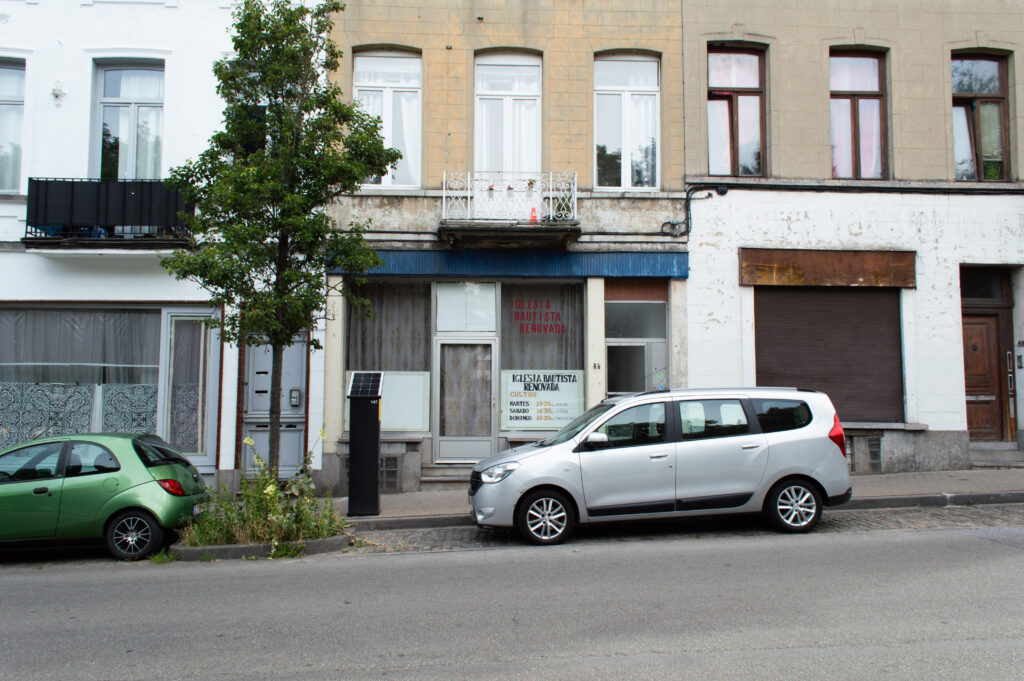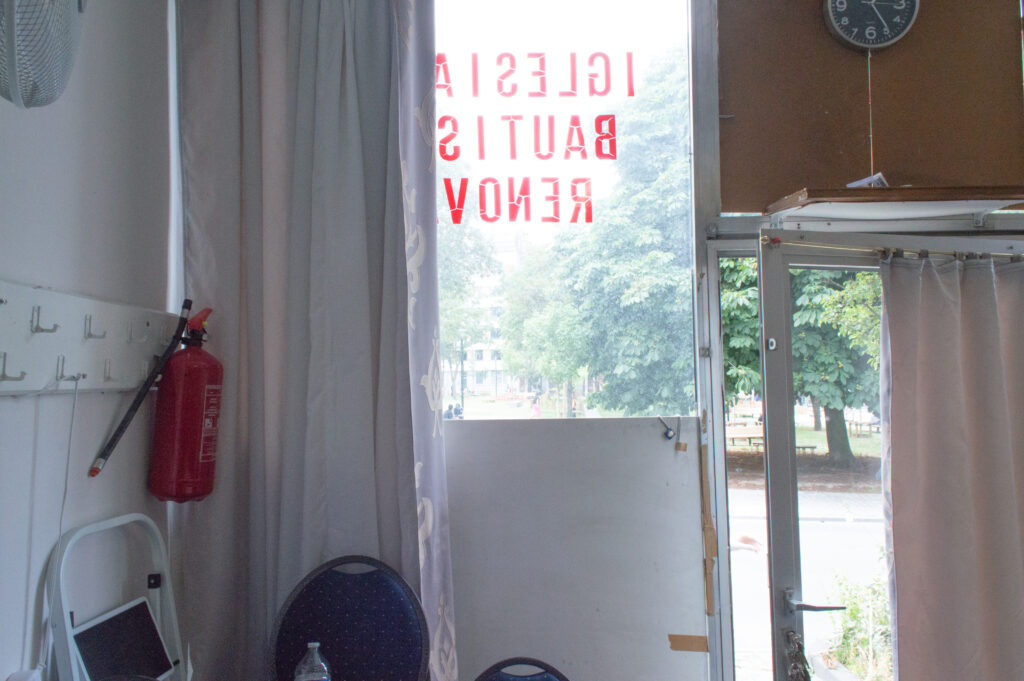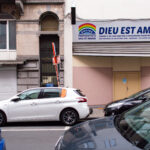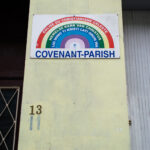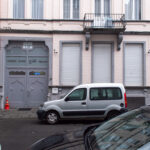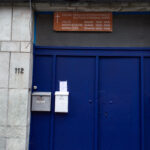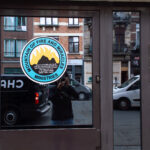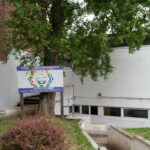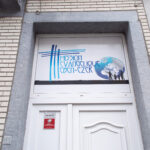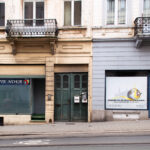Brussels

I did not know that train tickets sell out. I thought there was an infinite number of train cars that could and would be added, namely for the sake of maximizing profit (1). Unable to book a high speed ticket for the next two weeks, I turn to RyanAir, the European equivalent of Spirit. A logistical mishap was accounted for in my budget, so I head just south of Brussels to Charleroi. From there I get on a green bus with a whimsical name. The man sitting next to me is absentmindedly touching my knee with his knee, so I focus my gaze outside the window.
It is clear that I have entered a different geographic region of Europe. Greenery resembling the Midwest hugs the edges of the freeway which unlike the Midwest is free from billboards. A quick walk from Brussels Midi station and I am in Saint Gilles, one of the burroughs that make up the greater Brussels area (2).
My first impressions are that the city looks much more similar to what I am accustomed to, the neighborhoods sort of resembling Brooklyn. Demographically, it is also very diverse. A trip to the MigratieMuseumMigration later in the week breaks down how most of Brussels is comprised of people tracing their roots outside of Belgium. Like in Marseille, I don’t look out of place wandering around. Among the rows of Art Nouveau houses lie statues of famous Belgian comic characters, the only ones I recognize being TinTin and the Smurfs. Platoons of elderly Belgians line up to take photos with statues of these beloved childhood heroes as I walk by.
During my visit, I am fortunate enough to be shown around by Dr. Elisabeth Mareels, a professor and researcher in the Department of Social and Cultural Anthropology at KU Leuven. Her work focuses on Brazilian Pentecostal churches throughout Brussels and neighboring cities. She is kind enough to take me around and show me churches and mosques within walking distance of Saint Gilles, all the while explaining her research. I learn the following from her, and again, any mistakes come from my own possible misunderstandings. The Brazilian community in Belgium is largely from the state of Goiás and began arriving around twenty years ago. Brazilians are largely undocumented and work in the construction industry. Over the past decade, many people migrated back to Brazil back when the economy was booming. Those who have remained often attend one of the various Pentecostal churches scattered throughout the city’s southern burroughs.
We walk around and see over a dozen of these churches, the vast majority being situated in storefronts on modest streets. There is one prominent Brazilian church which has taken up residence in a former warehouse. Most, however, are relatively unassuming and market themselves quietly on the street. There is also another kind of church typology, one that Elisabeth describes as where apartments “hide” a space for workshops. These hidden mini-courtyards behind the main facade become the worship space for immigrant communities. I’d seen a handful of these workshops spaces walking around, typically behind gates that make the facade seem solid.
I take photos as Elisabeth explains the brief but jam-packed history of Pentecostalism in Brussels. Historically speaking, Pentecostalism was initially seen as what she called “sects” but what I’m guessing is closer to what we’d call cults. If you’ve ever been to a Pentecostal church service, you are likely not surprised to hear that a highly secular society sees people dancing and speaking in tongues as suspicious behavior. Halfway through the tour Elisabeth shows me the book published on her work researching Brazilian Pentecostal churches. It is an amazing tome documenting everything from old flyers and posters (3) whose aesthetics merit their own discussion to diagrams mapping the splintering of churches into new congregations throughout time. The classic Protestant conundrum of one church multiplying due to a myriad of reasons is just as present among Brussels’ Brazilian community as it is anywhere.
There are several places we visit that no longer host churches. Some have likely moved elsewhere while others have disappeared or combined with another congregation. As we walk, Elisabeth tells me a story about how a Pentecostal Brazilian family she knew befriended a Moroccan Muslim family because both were dealing with the issues associated with immigrating to a new country. Needless to say, the streets tell a similar story of encounter between distinct groups.
The mosques we visit seem to have a stable presence. It is clear that money has been spent to solidify these spaces as permanent fixtures in the neighborhood. Facades are decorated in ways that denote Islamic architecture, one going so far as to have minarets on top of a more traditionally Belgian style building. This is the first city I visit where mosques have a large and permanent presence. One mosque we walk past is supposedly in a former indoor pool built by the government back in a time when city governments did that sort of thing.
It begins to rain so we duck into a bar in a neighborhood where 1) the only halal butcher in the city is located 2) one of the best open air markets is located 3) a large business of second-hand car shops sourcing and selling throughout Africa and the Middle East is located and 4) the most skilled pick-pockets are located. I learn more about Elisabeth’s time doing research in this and other similar neighborhoods. She would often do what we were doing, sit and sip a fine Belgian beer. Although she’d start off alone, men eager to strike up conversation would soon approach. They’d share details about the neighborhood typically known only by locals. She met a lot of colorful characters during this research, many of whom became friends.
I also learned that Elisabeth teaches courses on art history. I can’t remember the name of the painting, but she shows me one from centuries ago that depicts a Black man in Brussels. In her class, she uses this painting to show that cross-cultural exchange has existed in Brussels for centuries. She teaches a legacy that has been partially forgotten and erased from history.
The rain lets up and we visit more churches, mostly congregations from West Africa. Some young men stand on the sidewalk wearing t-shirts Elisabeth recognizes as coming from an evangelical group. We walk past as they smoke cigarettes, luckily without getting evangelized. I photograph an old church after which a skittish looking young man asks nervously if he was in the photo. I show him that he wasn’t and he walks away looking relieved. I look back at the photo and realize I caught a scene that to the astute observer potentially implicates a number men in unsavory market activities. We walk on towards one last church that no longer exists on the far end of the neighborhood where new dimly lit restaurants can be found. Elisabeth has one final thing to show me, an urban juxtaposition that like the final church has seemingly vanished. Outside of a sauna for gay men there is a triangular nook in the wall. Not so long ago there was a Buddha statue surrounded by offerings piously placed by community members. The Buddha however is missing, perhaps taken to a temple, perhaps stolen by some teenagers. We head home, parting ways at the Porte de Hal.
1: The American Way
2: I still don’t fully understand how the city is set up, but there is Brussels proper, as in the central district, and then the boroughs, all of which are also “Brussels.”
3: Elisabeth also mentioned that physical advertisements have largely dried up, speculating that Facebook and Whatsapp groups have likely replaced the traditional paper ads.
The next morning I am supposed to visit two churches but end up staying at one. A few blocks from where I’m staying I spotted a sign reading Iglesia Bautista in a storefront with meeting times painted on the window. The main space is perhaps 20’x50’, able to seat maybe forty people comfortably. I had visited the Wednesday Bible study earlier in the week and was invited to come back on Sunday. Arriving a little early, one hermana invites me to the kitchen to eat an empanada and drink a coffee (4). The kitchen is at the end of a hallway disconnected from the main sanctuary space. It smells incredibly familiar, and for the first time in weeks I don’t feel lost.
People trickle in and I eventually meet Pastor Nelson. He has a lot to set up since the worship team consisting of his children and son-in-law are on vacation. A fair amount of the congregation, actually, is on vacation, but the people who remain are all very friendly and make me feel right at home. Pastor Nelson’s grandson runs the music and slides from the back, a recent high school grad who would have no trouble fitting into California. He sits in the back translating to his Vietnamese-Belgian girlfriend, who at various times during the service is invited to read scriptures in Dutch. All of us, in fact, take turns reading scripture throughout the service, going popcorn style throughout various books of the Bible.
After the service I am invited to stay for lunch. We move chairs to the side and bring out folding tables which quickly get filled with staples from throughout Latin America. More empanadas, chicken, salad, bread, and soda along with little bowls of aji (which I am warned may be too spicy–I am Mexican though, so no warning is necessary). Pastor Nelson sits down and tells me about the history of this church. Iglesia Bautista Renovada has been around for forty years, initially run by an American pastor. For a long time, the space was shared with Romanian and Russian congregations, both of which grew in size and moved out. The Latino congregation is made up primarily of people from Chile, Nicaragua, Brazil, Ecuador, and Colombia. At the beginning, there were seventy people who would attend, but those numbers have gradually decreased over the years. Pastor Nelson likens church to a train: some people hop on while others hop off, but the train keeps moving forward. Today, four people take turns preaching. Pastor Nelson, his daughter, his son-in-law, and a German man married to a Guatemalan woman.
We keep eating the delicious meal and Pastor Nelson tells me about himself. He is eighty years old and has been living in Belgium for decades now. Back in Chile he had worked in the transportation sector, having some affiliations with labor groups that he notes didn’t verge on the radical. Those who know Chilean history likely know where this is going. The military stages a coup in 1973 and all of the sudden having even loose ties to labor organizing is very, very dangerous. Belgium accepted thousands of Chilean asylum seekers, largely those who were now put in precarious conditions under Pinochet’s new regime. Pastor Nelson only began his ministry when the American pastor left sometime in the 2000s. He is formally retired but plans to continue as pastor of this church for the long haul. His story reminds me that immigration is often not a choice, but a matter of survival.
We pick up the food and some hermanas pack me a ziploc bag full of empanadas to take with me. I say my goodbye and thank Pastor Nelson for the kindness and openness he showed me. I walk outside and see that the park directly across from the church is open for the first time since I’ve been in Brussels. They were doing some sort of work on it and had cordoned it off, but now it was filled with families, couples, and a few men sipping on large Belgian beers. I take one final photo of the facade with its hand painted sign on the window and head back up the street.
4: The only means of making coffee where I was staying was a Moka Pot, with which I made three successful cups of coffee out of eight attempts.
